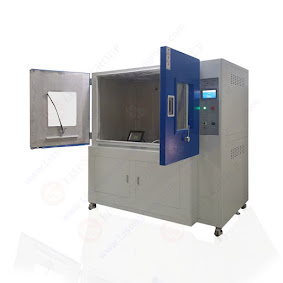How to do IP code test against LED outdoor luminaires?
The IP code, which stands for "International Protection Marking," is a test that determines the level of protection provided by electrical equipment, such as LED outdoor lighting, against dust, moisture, and other environmental factors. This test is used to evaluate the degree of protection provided by LED outdoor lighting. The level of protection against dust and solid particles is represented by the first digit of the IP code, and the level of protection against moisture and liquids is represented by the second digit of the IP code. The IP code is a two-digit code that is used to rate the level of protection provided by electrical equipment.
The IP code test for LED outdoor luminaires requires the following stages to be followed in order to be performed successfully:
- Prepare the environment for testing: The test should be conducted in a dustproof test chamber that is designed to imitate the circumstances of the environment in which the LED outdoor luminaires are intended to function. The dust that is used in the test has to be suitable for the environment that it will be placed in, such as using a fine dust for surroundings that are similar to deserts and using a coarser dust for environments that are similar to factories.
- Prepare the test samples: Before being put in the dustproof test chamber, the LED outdoor luminaires that are going to be evaluated should be well cleaned and free of any dust or debris.
- Carry out the dust test by first closing the dust-proof test chamber, and then allowing dust to be blown about the LED outdoor lighting for a predetermined amount of time. The applicable standard, such as IEC 60529. should specify both the length of time and the quantity of dust that is to be employed.
- Analyze the findings After the dust test is finished, the LED outdoor luminaires should be carefully checked to identify whether or not any dust has made its way into the apparatus. Recording and analyzing the test findings is what has to be done in order to evaluate whether or not the LED outdoor luminaires match the criteria for the IP code that was set.
- Repeat the test to ensure that the product is resistant to moisture. The test has to be repeated to ensure that the product is resistant to moisture using the quantity of water or other liquid that is required by the applicable standard, such as IEC 60529. The LED outdoor luminaires need to be inspected to discover whether or not any water has made its way into the equipment and whether or not they are up to the standards of the IP code that has been established.
In conclusion, in order
to execute an IP code test on LED outdoor luminaires, the testing environment
needs to be prepared, the test samples need to be prepared, the dust test needs
to be performed, the findings need to be evaluated, and the test has to be
repeated for moisture protection. It is important to conduct a thorough
analysis of the test findings for the IP code in order to identify whether or
not the LED outdoor luminaires satisfy the prerequisites for the required IP
code.

.jpg)
Comments
Post a Comment